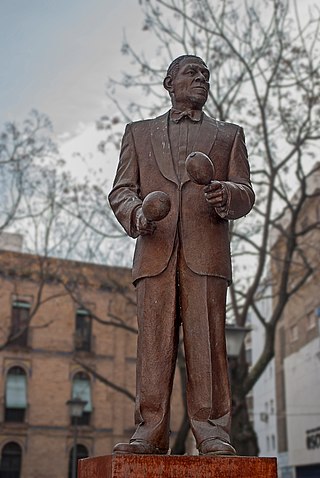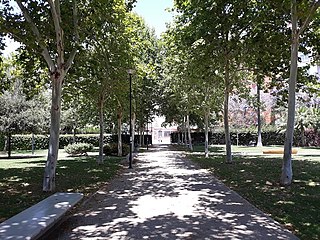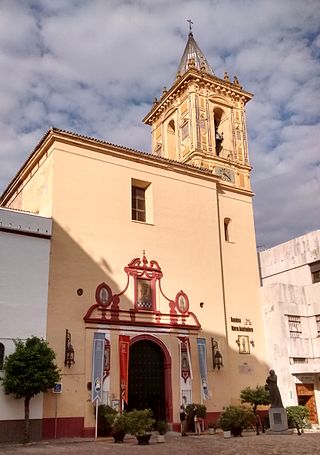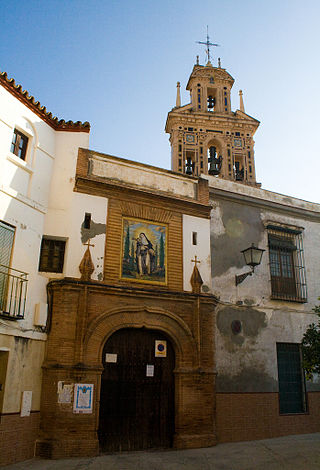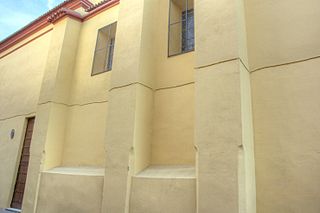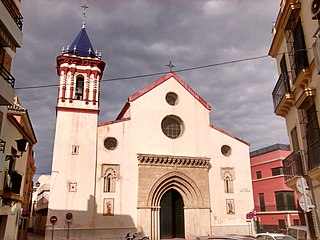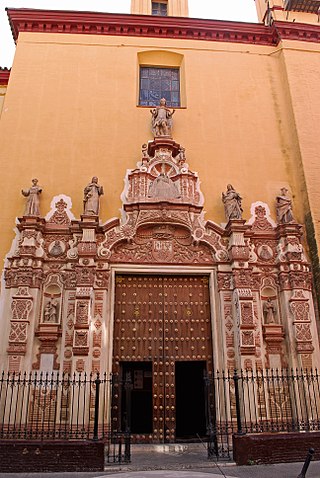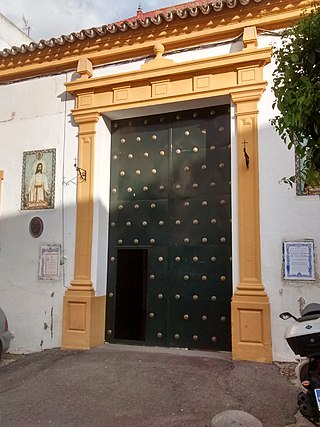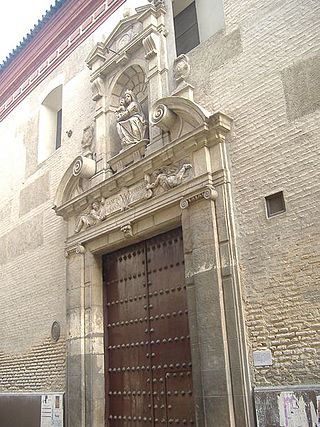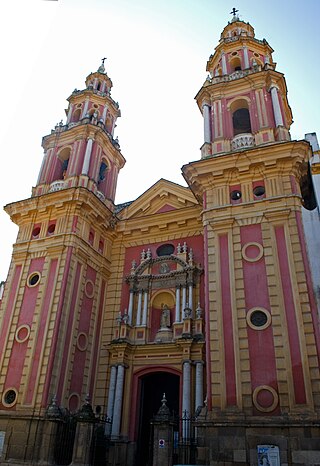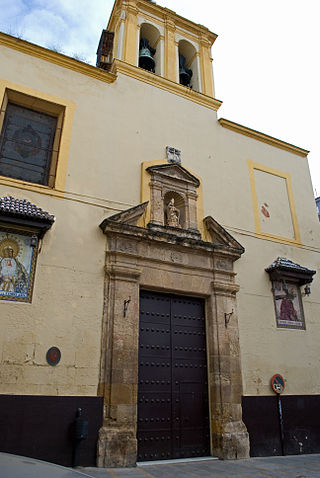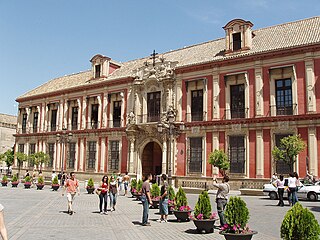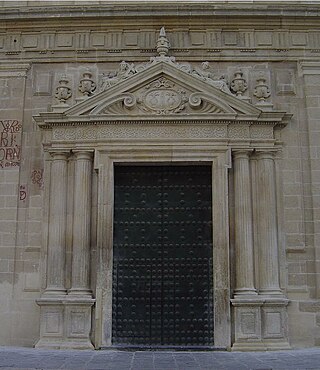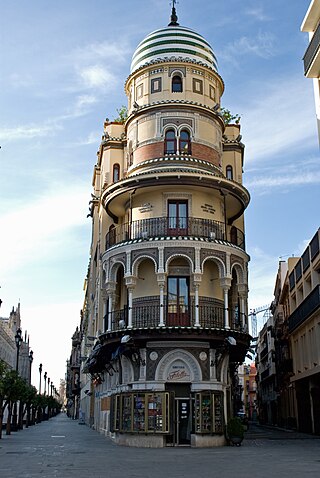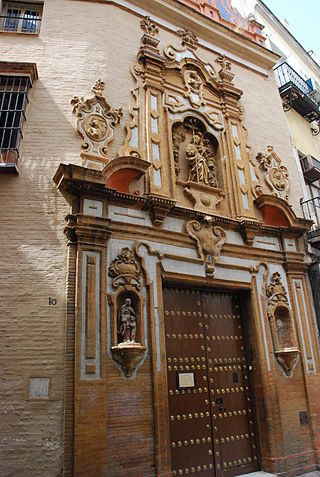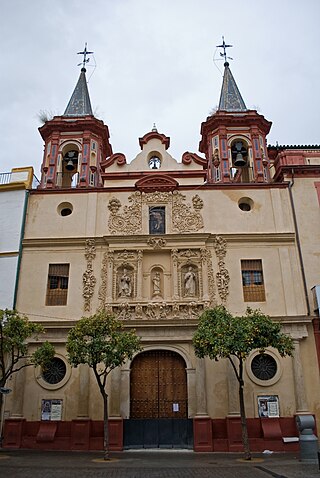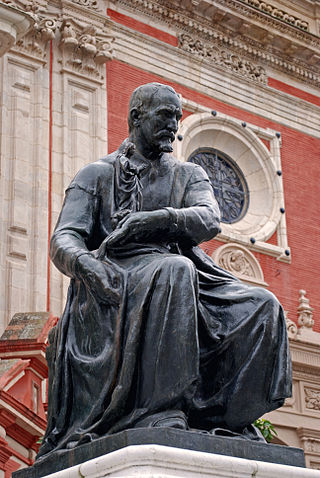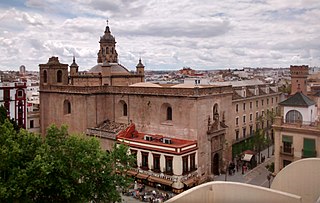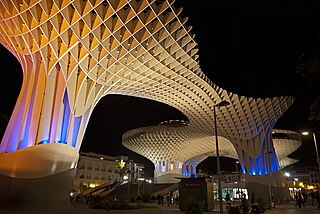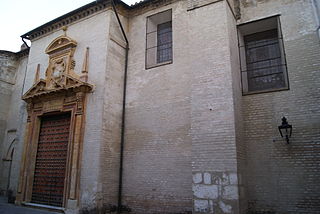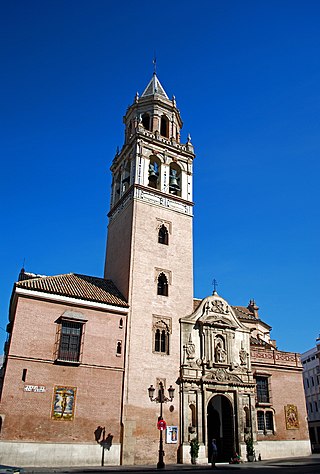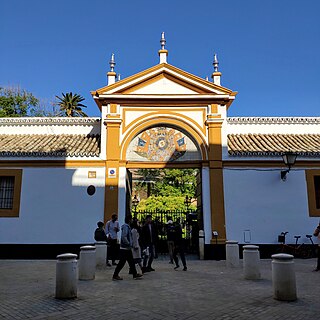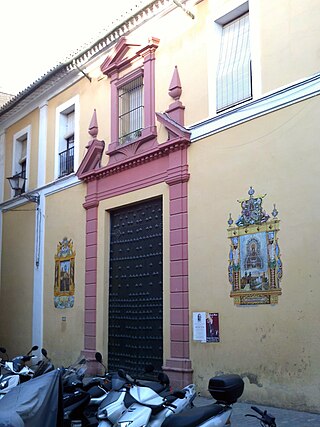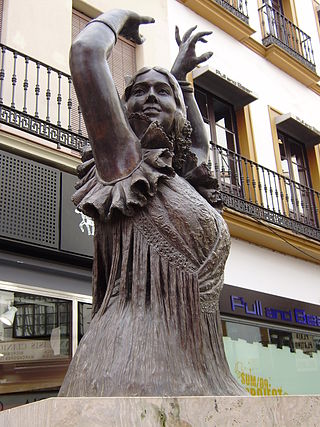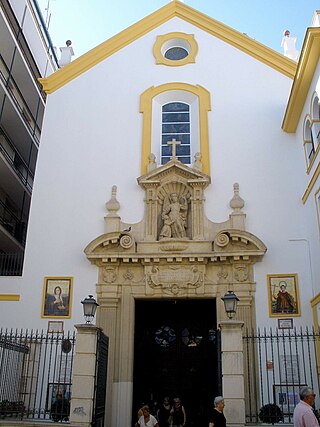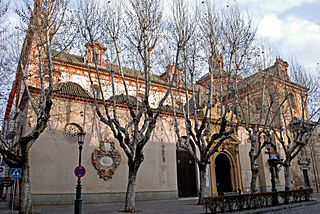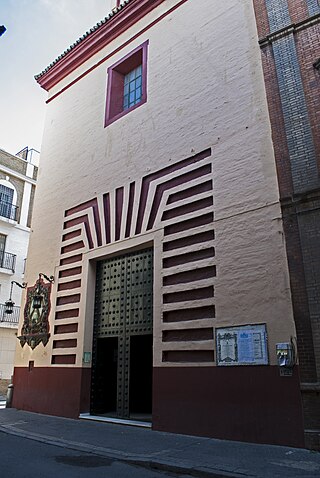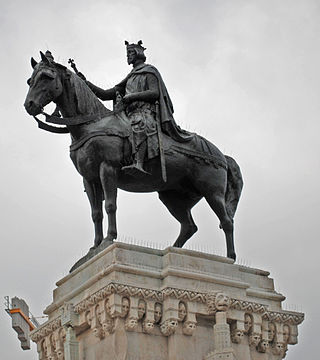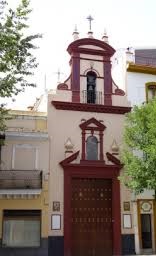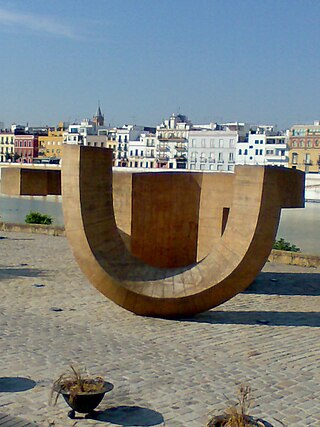Self-guided Sightseeing Tour #5 in Seville, Spain
Legend
Guided Free Walking Tours
Book free guided walking tours in Seville.
Guided Sightseeing Tours
Book guided sightseeing tours and activities in Seville.
Tour Facts
11.5 km
155 m
Experience Seville in Spain in a whole new way with our free self-guided sightseeing tour. This site not only offers you practical information and insider tips, but also a rich variety of activities and sights you shouldn't miss. Whether you love art and culture, want to explore historical sites or simply want to experience the vibrant atmosphere of a lively city - you'll find everything you need for your personal adventure here.
Activities in SevilleIndividual Sights in SevilleSight 1: Caños de Carmona
The Caños de Carmona is a Roman aqueduct built during the first century BC to supply water from a spring in the ancient Roman city of Irippo –current Alcalá de Guadaíra– to the ancient Roman city of Hispalis –current Seville–, both in the ancient Roman province of Hispania Ulterior –current Spain–. It was later renovated and partially re-built in the twelfth century by the Almohads and it was fully operational until its demolition in 1912. Some sections survived the demolition and remain standing today.
Sight 2: Antonio Machín
Antonio Abad Lugo Machín was a Spanish-Cuban singer and musician. His version of El Manisero, recorded in New York, 1930, with Don Azpiazú's orchestra, was the first million record seller for a Cuban artist. Although this was labelled a rhumba, it was in reality a son pregón, namely, a song based on a street-seller's cry.
Sight 3: Agumore's Park
Agumore Park is a green area located in the San Pablo-Santa Justa district of the city of Seville. It was inaugurated in 1993.
Sight 4: Basílica de María Auxiliadora
The Basilica of Mary Help of Christians is located in Seville. It is from the seventeenth century. He belongs to the Salesians. The Archconfraternity of Mary Help of Christians Crowned and the Brotherhood of the Trinity have their headquarters there.
Sight 5: Convento de Santa Paula
The Convent of Santa Paula is a monastic monastery in Seville of nuns of the Order of San Jerónimo, listed as a historical monument. It is located in the historic centre of the city, behind the parish of San Marcos and very close to another of the great Sevillian convents, that of Santa Isabel. In the past it had an extensive land, mainly occupied by its orchard.
Sight 6: Iglesia de San Marcos
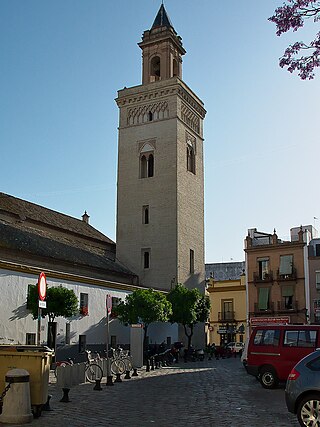
The church of San Marcos in Seville is located on San Luis Street, within the old town of the city, in what was its intramural area. It was built in the fourteenth century in Gothic-Mudejar style.
Sight 7: Convento de Santa Isabel
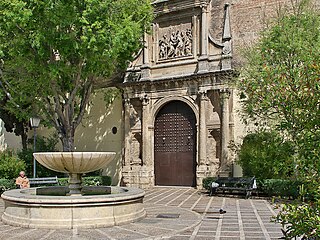
The convent of Santa Isabel is a convent of the Congregation of Philippian Religious Daughters of Mary Sorrowful that is located at number 2 Hiniesta Street, giving its south façade to the Plaza Santa Isabel, in Seville. It is located in the historic centre of the city of Seville and very close to another of the great Sevillian convents, the Convent of Santa Paula.
Sight 8: Monasterio Santa María del Socorro
The convent of Santa María del Socorro is located on Socorro Street in the San Julián neighborhood of Seville, Andalusia, Spain.
Sight 9: Iglesia de San Román
The church of San Román located in the square of the same name in Seville is one of the oldest temples in the city, dating back to 1356. It is part of the so-called Gothic-Mudejar churches.
Sight 10: Iglesia de Los Terceros
The old convent of Nuestra Señora de la Consolación, known as the convent of the Third Franciscans because it is of that order, is located in the city of Seville. It was founded in 1602. The church is a Catholic temple and the main headquarters of the Brotherhood of the Supper.
Wikipedia: Convento de los Terceros Franciscanos (Sevilla) (ES)
Sight 11: Iglesia de Santa Catalina
The Church of Santa Catalina is a church located in Sevilla, Spain, constructed in the fourteenth century. It was declared Bien de Interés Cultural in 1912.
Sight 12: Iglesia de Santiago
The Church of Santiago el Mayor is located in the Plaza Jesús de la Redención, in the Santa Catalina neighborhood of Seville, Andalusia, Spain.
Sight 13: Convento Santa María de Jesús
The convent of Santa María de Jesús is a religious establishment, of the order of the Poor Clares, founded in 1502 and located on Calle Águilas in Seville. Its founder was Jorge Alberto of Portugal and his wife Felipa Melo. For its establishment they brought Marina de Villaseca, patron saint and founder of the Convent of Santa Isabel de los Ángeles de Córdoba.
Sight 14: Iglesia de San Ildefonso
The church of San Ildefonso de Sevilla, located in the square of the same name, is a temple and a parish seat whose construction began in 1794 and was completed in 1841, according to a project by Julián Barnecilla, executed by the architect José Echamorro.
Sight 15: Iglesia de San Nicolás de Bari
The church of San Nicolás de Bari is a Catholic church located in the old town of Seville, province of the same name, autonomous community of Andalusia, Spain. This temple is the headquarters of the Brotherhood of La Candelaria, which worships the Cristo de la Salud and the Virgen de la Candelaria. As residents of the parish of San Nicolás de Bari, the Marquises of Loreto paid for a large part of the reconstruction works of the parish that culminated in 1758. They were also patrons of its main chapel, in whose altarpiece the coat of arms of the lineage and the family pantheon still remain.
Sight 16: Iglesia de San Isidoro
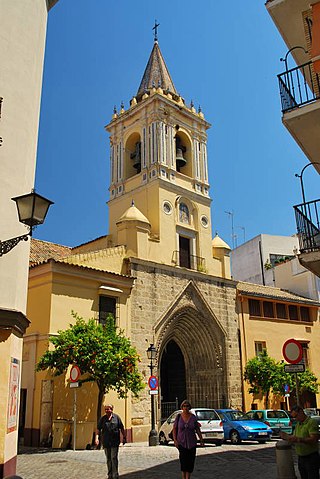
The church of San Isidoro in the city of Seville is the seat of a Catholic parish. It was built in the fourteenth century and is in the Gothic-Mudejar style.
Sight 17: Museo del Baile Flamenco
Get Ticket*The Museum of Flamenco Dance of Seville is located in the heart of the city, in the Barrio de Santa Cruz; between the well-known Plaza de la Alfalfa and the Cathedral. Almost the entire Museum is dedicated to one of the artistic expressions that has had the most roots and importance in the culture of Andalusia, such as Flamenco dance. It is the first, and only museum in the world known to date, dedicated to this art. Visitors from all over the world come to learn about the origins and evolution of a centuries-old tradition and culture.
Sight 18: Casa de los Pinelo
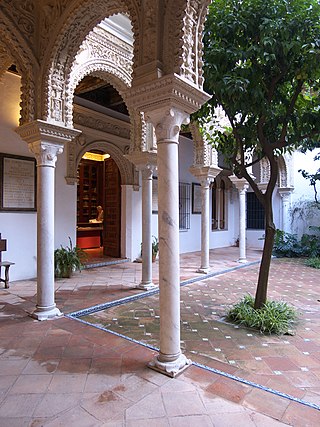
The Casa de los Pinelo is a Renaissance-era building located in the centre of Seville in Spain. It houses both the Real Academia Sevillana de Buenas Letras and the Real Academia de Bellas Artes de Santa Isabel de Hungría. It is named after one of its former owners, Francisco Pinelo, a wealthy merchant.
Sight 19: Palacio Arzobispal
The Archbishop's Palace of Seville is a palace in Seville, Spain. It has served as the residence of bishops and archbishops of the episcopal sees and numerous nobleman and military figures to the present time. It is located in the southern section of Seville, in the Plaza Virgen de los Reyes, angled almost opposite the Giralda. It is situated on the northeastern side of Seville Cathedral in the neighborhood of Santa Cruz. Of Spanish Baroque architectural style, it has had the status of National Monument since 1969.
Sight 20: Giraldillo
The Giraldillo is the popular name given to the sculpture of a female form that crowns the Giralda in Seville. It received the names of Faith, Triumph of the Church, Colossus of Victorious Faith or Allegory of the Strength of Faith. It was made in 1568 by Bartolomé Morel.
Sight 21: Capilla del Sagrario
The tabernacle of the Cathedral of Seville is a religious temple of baroque style and Catholic worship that is located on the Avenida de la Constitución in that city. It is integrated into the large block formed by the Cathedral, whose parish services it manages, the Patio de los Naranjos and other annexed buildings.
Sight 22: Edificio La Adriática
The building of La Adriática was erected in Seville between 1914 and 1922 on Calle Cánovas del Castillo, now Avenida de la Constitución.
Sight 23: Capilla de San José
The Chapel of San José is a chapel located in Sevilla, Spain. It was declared Bien de Interés Cultural in 1912.
Sight 24: Iglesia de Nuestra Señora de la Paz
The hospital of Nuestra Señora de la Paz in Seville, also known as the asylum of San Juan de Dios, is an old hospital whose construction began in the sixteenth century, it is listed as an Asset of Cultural Interest. It is located in the center of the city, with facades to the Plaza del Salvador and Calle Sagasta.
Wikipedia: Hospital de Nuestra Señora de la Paz (Sevilla) (ES), Website
Sight 25: Monumento a Martínez Montañés
The monument to Martínez Montañés is an urban sculpture that is located in the Plaza del Salvador, in Seville, Andalusia, Spain. It is dedicated to the Jienense sculptor Juan Martínez Montañés (1568-1649), which was established in the city and became one of the greatest exponents of the Sevillian sculpture school.
Sight 26: Iglesia del Salvador
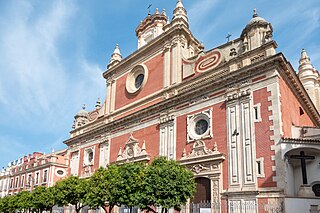
The Church of San Salvador is a church in Seville, Spain. It is the second-largest church in Seville, after the city's cathedral.
Sight 27: Iglesia de la Anunciación
The Church of the Annunciation is a Catholic church in Seville. It has in its crypt the pantheon of Illustrious Sevillians, where Gustavo Adolfo Bécquer is buried, among other figures. It is located on Calle Laraña, next to the Faculty of Fine Arts of the University of Seville.
Sight 28: Setas de Sevilla
Setas de Sevilla or Las Setas, initially titled Metropol Parasol, is a large, predominantly wood structure located at La Encarnación square in the old quarter of Seville, Spain. It accommodates a traditional market, restaurants, a performance square, archaeological museum — and 'rooftop' terrace with a panoramic view of Seville's old city.
Sight 29: Convento de Santa Inés
The convent of Santa Inés de Sevilla, located in the central street of Doña María Coronel in this city, was founded in 1374 by a lady of illustrious Sevillian family, María Coronel, widow of Juan de la Cerda. This foundation was carried out on the site of the family palace of his father, the Lord of Aguilar, to which they later added some adjoining houses, such as that of Juan Rodríguez Tello, on which the church would later be built. A total of forty women entered this convent at the time of its foundation
Sight 30: Iglesia de San Pedro
The church of San Pedro is a Catholic temple in Gothic-Mudejar style built in the fourteenth century and renovated in the sixteenth and eighteenth centuries. It is located in the Plaza de San Pedro in the city of Seville and is the seat of the parish of San Pedro and San Juan Bautista.
Sight 31: Palacio de las Dueñas
Palacio de las Dueñas is a palace in Seville, Spain, currently belonging to the House of Alba. It was built in the late 15th century in the Renaissance style with Gothic and Moorish influences. The palace is one of the major historic homes of great architectural and artistic heritage in the city. The poet Antonio Machado was born here, as were Carlos Falcó, 5th Marquess of Griñón, and the Marquess of Castel-Moncayo. On October 5, 2011, Cayetana Fitz-James Stuart, 18th Duchess of Alba, married her third husband here. The palace became a national monument on June 3, 1931.
Sight 32: Iglesia de San Juan de la Palma

The Church of San Juan de la Palma, the name by which the Church of San Juan Bautista is commonly known, is located in the Old Town district of Seville.
Sight 33: Iglesia de San Martín
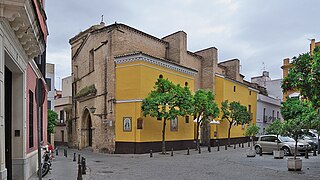
The Church of San Martín in Seville is one of the oldest temples in the city. It is the headquarters of the Brotherhood of the Lanzada.
Sight 34: Iglesia de la Misericordia
The Church of Mercy in Seville is a Catholic temple that is located inside the Old Town of the city.
Sight 35: Monumento a Pastora Imperio
The Monument to Pastora Imperio is dedicated to this artist of flamenco and cinema of the twentieth century. It is the work of the sculptor Luis Álvarez Duarte and is located at the intersection of Velázquez and O'Donnell streets in Seville, Andalusia, Spain. It was made thanks to the full patronage of the XVIII Duchess of Alba. It was inaugurated in 2006.
Sight 36: Studebaker
Enrique Orce Mármol is a Sevillian ceramist, painter and drawing teacher of the first half of the twentieth century whose work ranges from advertising ceramics to ceramics with religious motifs.
Sight 37: Iglesia de Santo Ángel
The church of Santo Ángel in Seville was the temple of the convent of Santo Ángel de la Guarda, of the Order of Carmen Descalzo. This convent had a school. It was founded in the sixteenth century.
Sight 38: Iglesia de la Magdalena
Santa María Magdalena is a Baroque church in Seville, southern Spain. It was built in 1691-1709 to a design of architect Leonardo de Figueroa.
Sight 39: Capilla de Montserrat
The Chapel of Montserrat in Seville is a religious building of Catholic worship located in the historic center of the city. It is the headquarters of the Brotherhood of Montserrat, a corporation that carries out an annual procession in the afternoon and evening of Good Friday.
Sight 40: Iglesia de San Buenaventura
St. Buenaventura's Church is situated in the calle Carlos Cañal in the Casco Antiguo of Seville, Andalusia, Spain. It was the church of the Franciscan College of San Buenaventura that was destroyed in the 19th century.
Sight 41: Fernando el Santo
The monument to San Fernando is a monument dedicated to Ferdinand III of Castile, conqueror of Seville in 1248 and declared a saint by the Catholic Church in 1671. It was made by several artists and is located in the Plaza Nueva, in the Arenal neighborhood, Casco Antiguo district.
Sight 42: Capilla de Nuestra Señora de la Piedad
The Chapel of La Pietà is a Catholic building located at 13 Adriano Street in the Arenal neighborhood, in the town of Seville, Andalusia, Spain. It is the headquarters of the Brotherhood of Baratillo.
Sight 43: Monumento a la Tolerancia
The monument to tolerance is a monumental sculpture located in Seville (Spain) made by the sculptor and painter Eduardo Chillida (1924-2002), financed by the Friends of Sefarad Foundation, and which is installed on the salt spring, together to the Paseo de Colón, the Puente de Triana and the Guadalquivir River. The monument was inaugurated in 1992, coinciding with the celebration of the Universal Exhibition of Seville.
Sight 44: Iglesia Nuestra Señora de la O
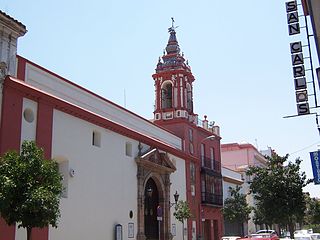
The church of Nuestra Señora de la O is a Roman Catholic church located on Calle Castilla, in the neighborhood of Triana, Seville, Andalusia, Spain. It is the headquarters of the Brotherhood of the O.
Share
Disclaimer Please be aware of your surroundings and do not enter private property. We are not liable for any damages that occur during the tours.
GPX-Download For navigation apps and GPS devices you can download the tour as a GPX file.

